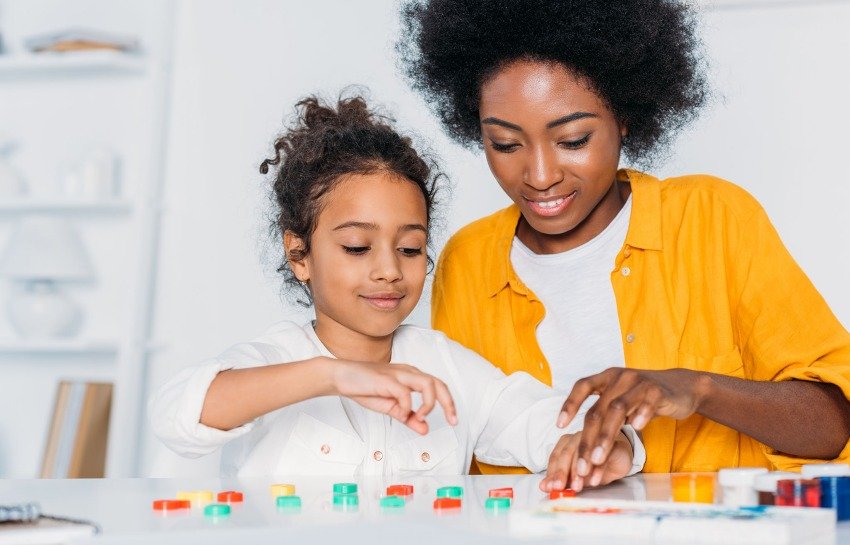Preparing Your Child for Math

Mathematics is an important part of our world. A good foundation for math begins with a variety of experiences in handling small objects. You can make “doing math” fun and natural for your child as you play simple games.
One to One Correspondence
- Setting the Table: Set each person’s place with one spoon, one plate, one bowl, etc.
- Matching: Put things together that are the same color, shape or pattern.
- Color Hunt: Find a red (or any colored) object and look for toys or other items around the house that are the same color.
- Playing Cards: Match playing cards into pairs that are the same (twos, queens, aces, …)
Classification
- Sorting Socks: Sort your family’s socks by color, by size, or by owner.
- Sorting Silverware: Sort a pile of silverware into groups of spoons, forks and knives.
- Color Groups: Classify toys into groups by their color.
Shapes
- Shape Hunt: Cut a paper circle, square, triangle or rectangle and hunt throughout the house for objects that are the same shape (a round doorknob, a rectangular door, a square table).
- Shape Feely: Place a small cardboard square, circle, triangle, or rectangle individually into a bag; have the child reach in, feel the shape and name it.
Measurement
- Water Play: Make a variety of containers available for play during bath time or outside. Filling and emptying measuring cups, plastic shampoo bottles and bowls will help to develop an early understanding of volume. Talk about “full”, “empty”, and “half-full”.
- Shorter and Taller: Use your child as a measuring stick. Have her stand beside a table or TV; is he taller or shorter?
- Comparing Weights: compare the weights of different objects by having your child hold them in his hands. Be sure to use objects that vary a great deal in weight.
- Put dolls, lumps of playdough, or measuring cups in order by placing them smallest to biggest.
Counting
- More or Less: Group toys, crayons, forks, or such objects into two groups. Talk about which group has more and which has less. Have your child make one group with more and one group with less.
- Steps: Count steps as you walk up or down them.
- Raisin Count: Line up raisings, Cheerios, or peanuts. Count them and then eat them!
- Count: toes, fingers, noses, spoons, pillows, etc. Count anything that will hold still.
For more information about how to encourage a child’s development, visit helpmegrowmn.org.
Portions of this content, developed by Help Me Grow Minnesota, may have previously appeared elsewhere.



